Commending the Conceptual Design of Chef Cedric Vongerichten’s Wayan
The ethos of the restaurant’s cocktails and cuisine weave into a Rockwell Group-designed space that we can’t wait to revisit

In early February, chef Cedric Vongerichten’s NYC hotspot Wayan hosted an extravaganza for its first anniversary—a milestone that oftentimes ushers in one of the most challenging times for restaurant, after the allure of “brand newness” fizzles out and strength of reputation and seasonal menu changes act as traffic drivers. Wayan easily weathered the transition as many sought out its delectable Indonesian cuisine, prepared with French flair, along with the complementary cocktails, and the perfectly paired design of the restaurant itself.
Then, of course, restaurants and bars across the city (and country) shuttered for COVID-19 directives, or pivoted to take-out and delivery (which Wayan offers through Caviar and Postmates). With parts of the world slowly phasing out of pause, the venue is not only one we hope to revisit when it’s safe to do so, it’s also an impressive study of conceptual restaurant design, where everything simply goes well together.
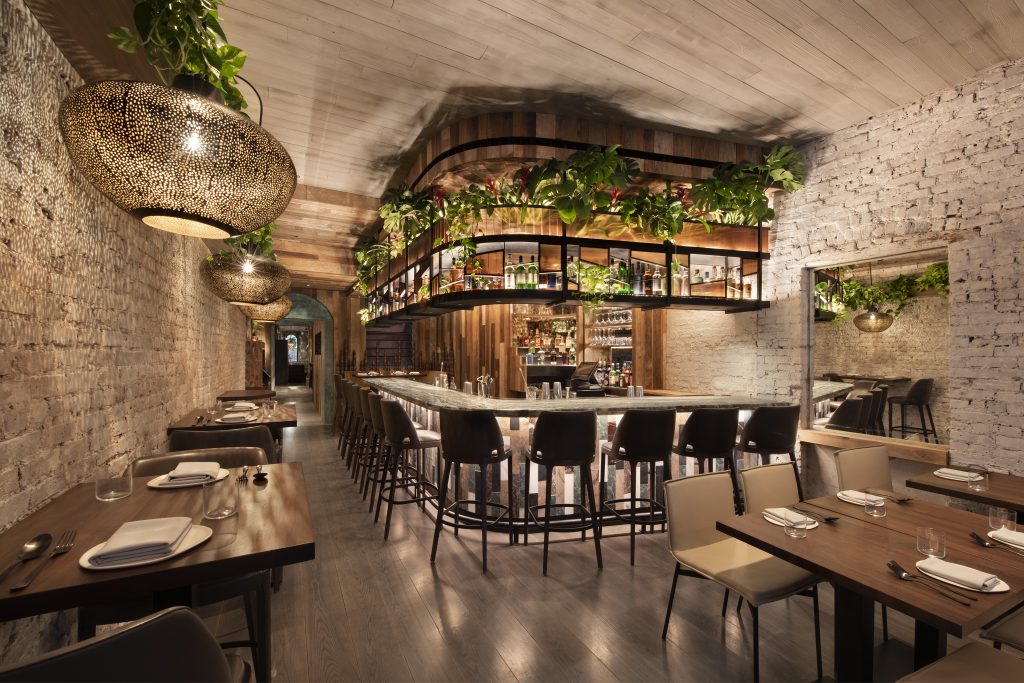
For those who haven’t ducked into the lush Nolita eatery and nibbled on the chilled peakytoe crab or surrendered all dining dignity to the chocolate cookie “martabak” dessert with butternut squash ice cream, Wayan is the first solo venture of the chef and his wife, Ochi, in NYC. Chef Vongerichten and Ochi previously opened Vong Kitchen and Le Burger in the central business district of Jakarta (Ochi’s hometown). Those establishments are sisters to Wayan in ethos and aesthetics. Shawn Sullivan, a partner at architecture and design firm Rockwell Group, and his team, worked with the Vongerichtens on all three of these venues. Their vision for Wayan, an intimate 80-seater, transports guests by way of vegetation and various wood embellishments. Though it represents NYC’s culinary scene, it also acts as a bridge beyond the Nolita neighborhood.

“We love the energy… the ‘village’ feeling,” chef Vongerichten explains to us about his attraction to the neighborhood. “After months and months of looking, we kept going back to Nolita and it just made sense for us to open Wayan in this great neighborhood. It’s familial, buzzy and embodies the true New York downtown vibe.”
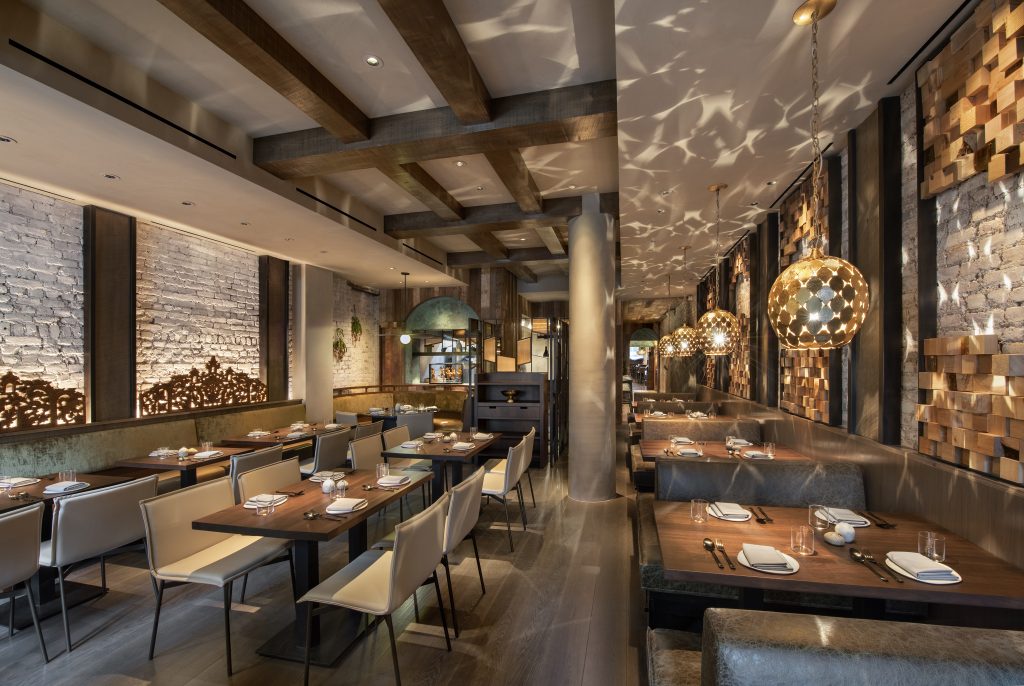
Once inside, guests finds several sections—each with their own mood, function and flow—that contribute to the overall energy of the restaurant. “Design occupies so many different, crucial parts of a restaurant: the layout, the feeling when you enter, and the choreography,” says Sullivan. “At Wayan, we inherited a linear, narrow space. We really thought about its choreography and how to create a sense of rhythm from the front of the restaurant to the back. So, from a practical standpoint, we first organized the floor-plan into four distinct areas. Each section is connected by different points of social interaction.”
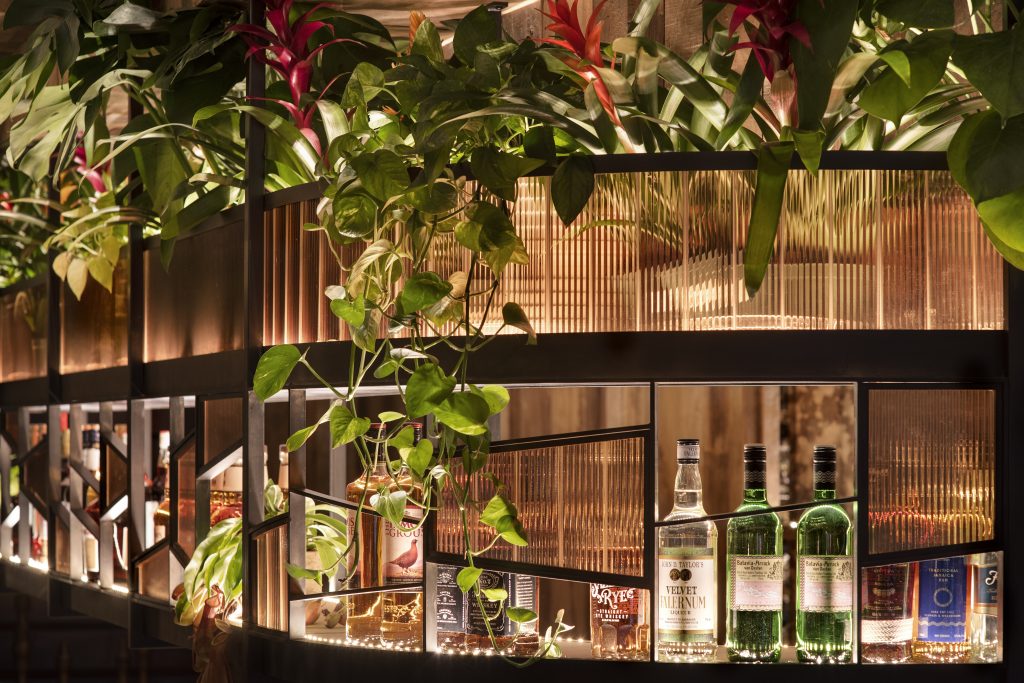
He continues, “Upon entry, guests encounter the bar which glows through the storefront window, beckoning people inside at night. To reach the dining room, guests move through a corridor with a live-edge wood drink rail and past an open kitchen, providing a glimpse into the performative nature of the cooking. There’s a liveliness melding each space together, like a line of energy that flows from the entry to the rear main dining room.”

Rockwell Group employed “a variety of materials to craft the narrative. We designed and incorporated many authentic Indonesian materials that tell the Balinese story right at the door.” It begins with the “authentic Indonesian wood service door, oxidized copper glazing, and laser-cut batik screen detailing, grounding the original building’s entry façade.” Inside, they paired marble slates with amber glass millwork, and “a chef’s table comprised of a turquoise stone bar top with oxidized copper millwork and a raffia-patterned porcelain tile floor.” Sullivan adds that in the rear dining room, “custom batik-patterned laser-cut coconut shell and glass globe fixtures cast beautiful shadows at night, evoking Indonesia’s dappling sunlight.”
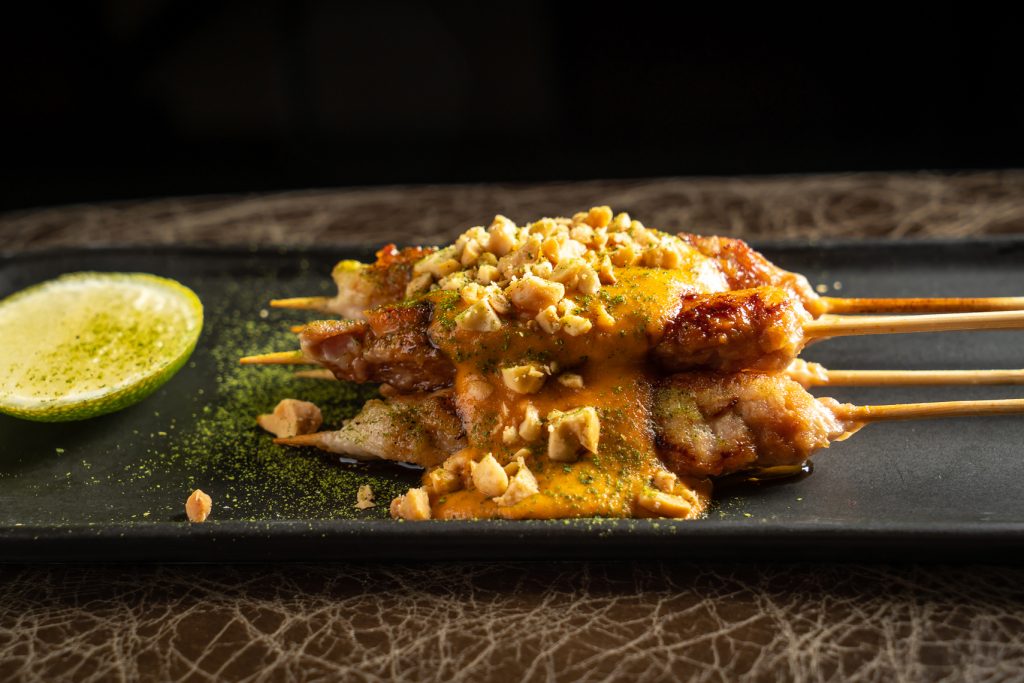
“Designing a restaurant with a smaller seat count allowed us the opportunity to facilitate a deeper connection between the chef and the guests,” Sullivan says. “For example, the chef’s table sits in the transitional space between the bar and main dining room. The linear, four-seat space is both intimate and transportive. Here, you could have a conversation and the rest of the restaurant dematerializes. The synergy between the design and the Vongerichtens’ impeccable service creates a space that evokes warmth and invites lingering.” These designs reinforced the mentality that hospitality is of the utmost importance. It’s furthered by the fact that Ochi greets everyone in the dining room—and stops by each table, every night.
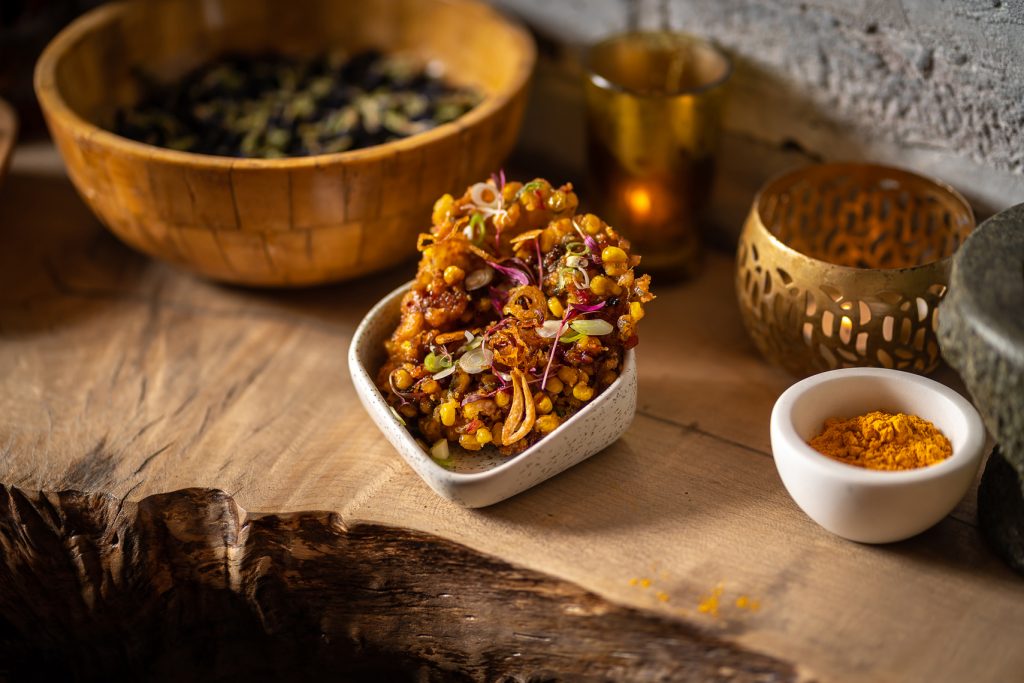
As for the menu development, chef Vongerichten says the experience was natural. “I’ve been to Indonesia many times,” he tells us, “so the food at Wayan is simply my interpretation of the native cuisine and how I envision it from my memory.” Creating Indonesian dishes with a French touch was his natural instinct. He is a classically French-trained chef, after all. Through their time in Indonesia, the Vongerichtens visited many regions, seeking inspiration and selecting for their menu what moved them most. All dishes are served family style.
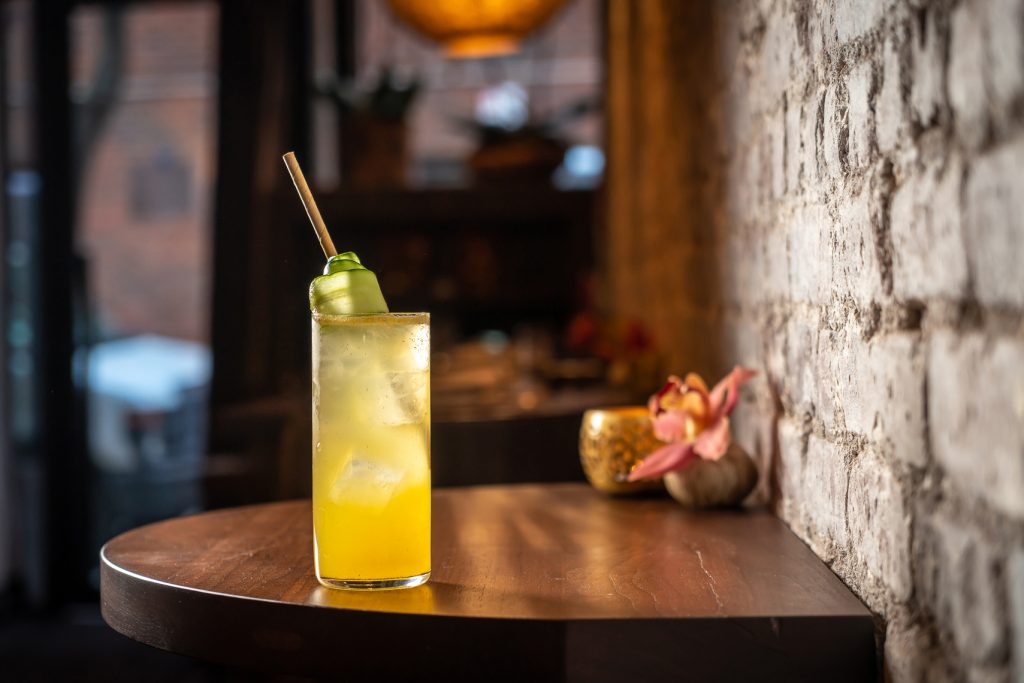
With strong cocktail programs expected from new restaurants, chef Vongerichten tapped an exemplary team of bartenders and gave them creative freedom around a set of criteria: “to uphold a consistent Indonesian theme, incorporate Indonesian flavors and ingredients, allow for simplicity and seasonality, reasonable pricing and, of course, they must be delicious and well-balanced.” He adds, “Cocktails should, like the food, feel natural and not forced into a fusion.” All adhere to this but two stand out for this exceptional balance: the Yuzu Fizz and OCHILIKES. Wayan’s menu also includes house-made sodas, several reliable beers and Indonesia’s Batavia Arrak rum.

“The design was very important for us and a critical component to Wayan’s identity,” chef Vongerichten concludes. “We wanted to bring back the authentic feeling and spirit of Indonesia using textiles and materials commonly found in Bali… elements of wood, stone and lush greenery. It adds a more complete, all-encompassing and transportive experience.” He notes that when you walk into Wayan you feel like you are somewhere else. We’d add that when you taste the food, you’re also transported—and that feeling happens to align with the decor.
Chef Vongerichten has established a GoFundMe for Wayan employees affected by COVID-19 and its impact on the food industry. His signature dishes from Wayan are also available for delivery on CookUnity, a ready-to-eat meal delivery service. For every Wayan meal sold, CookUnity will donate one meal to Food Bank for NYC.
Hero image by Emily Andrews, courtesy of Rockwell Group












